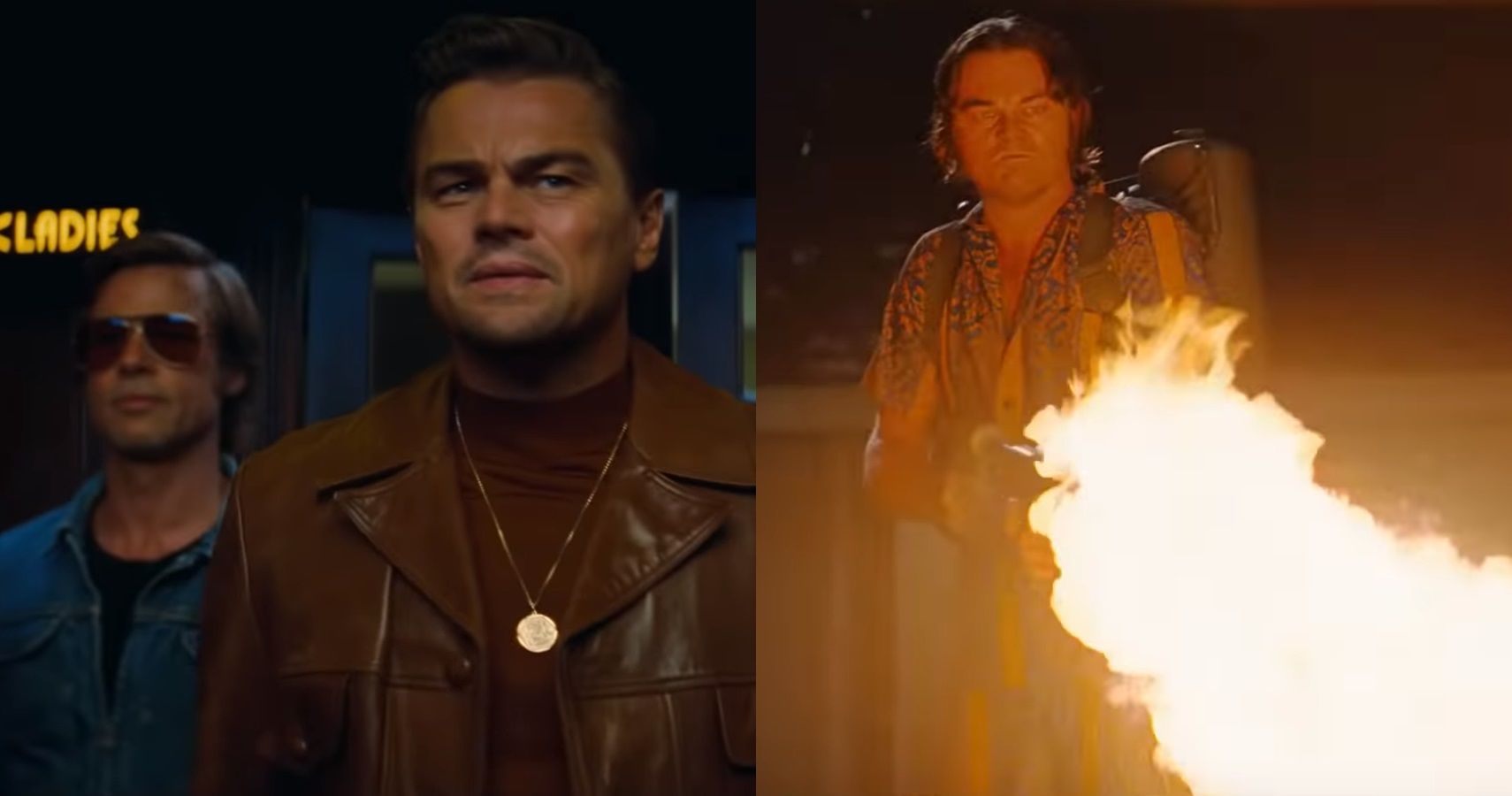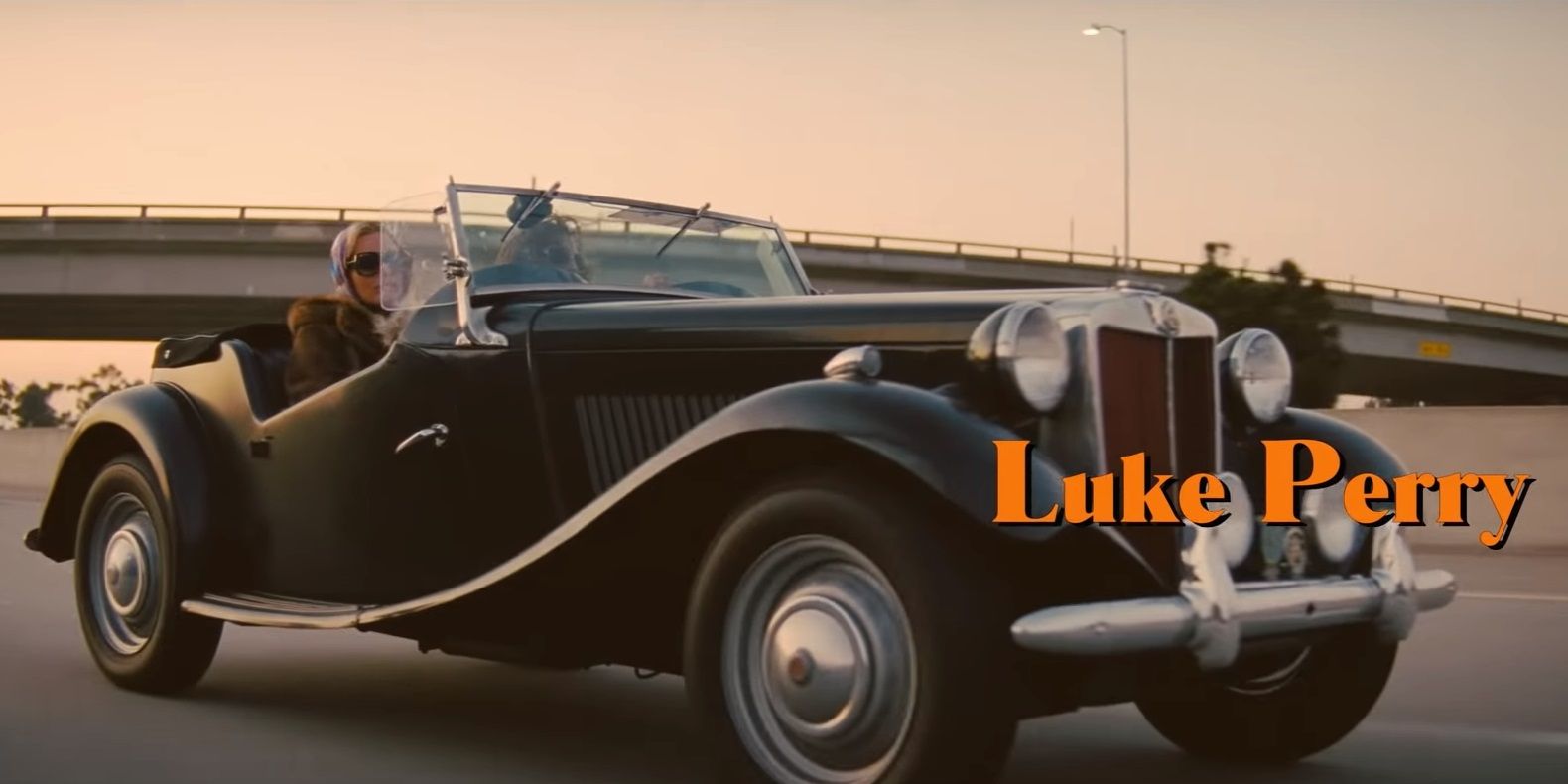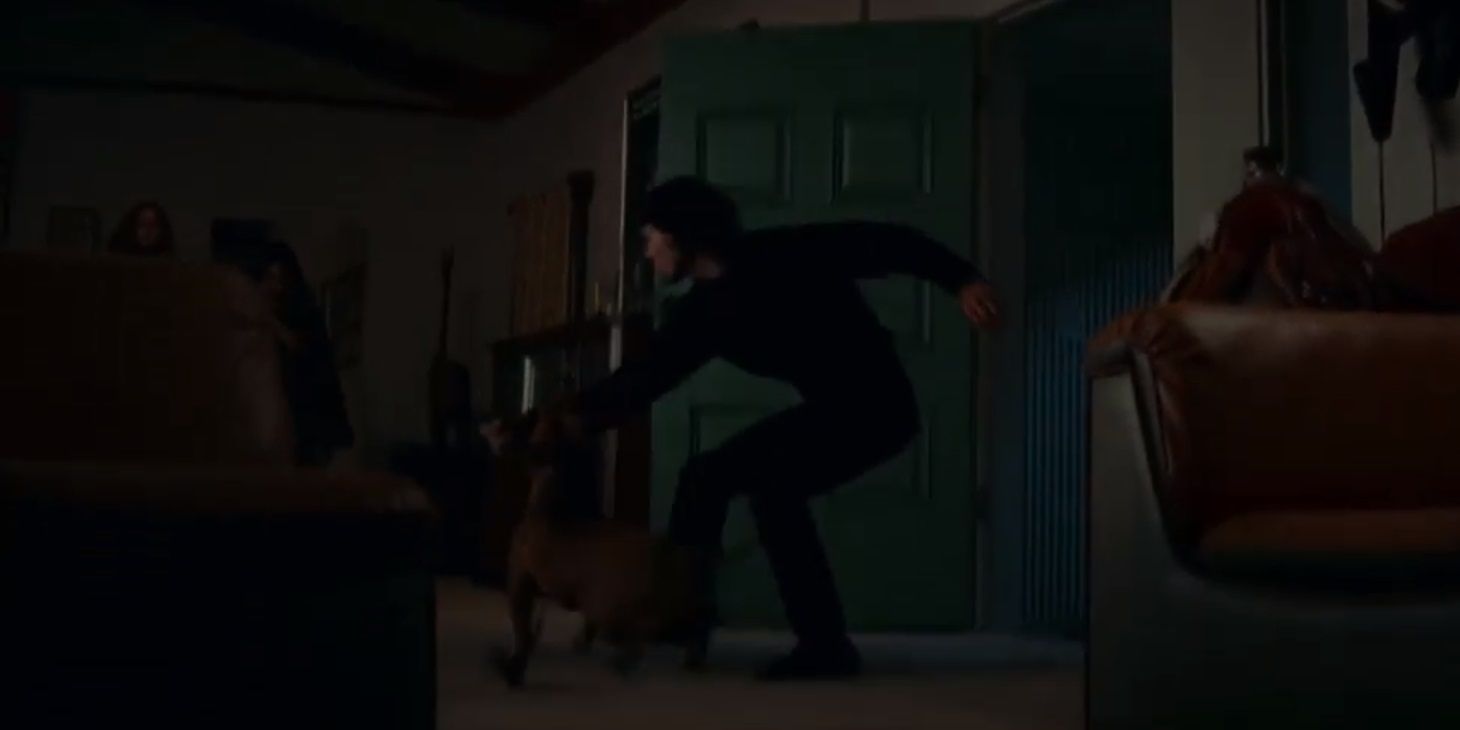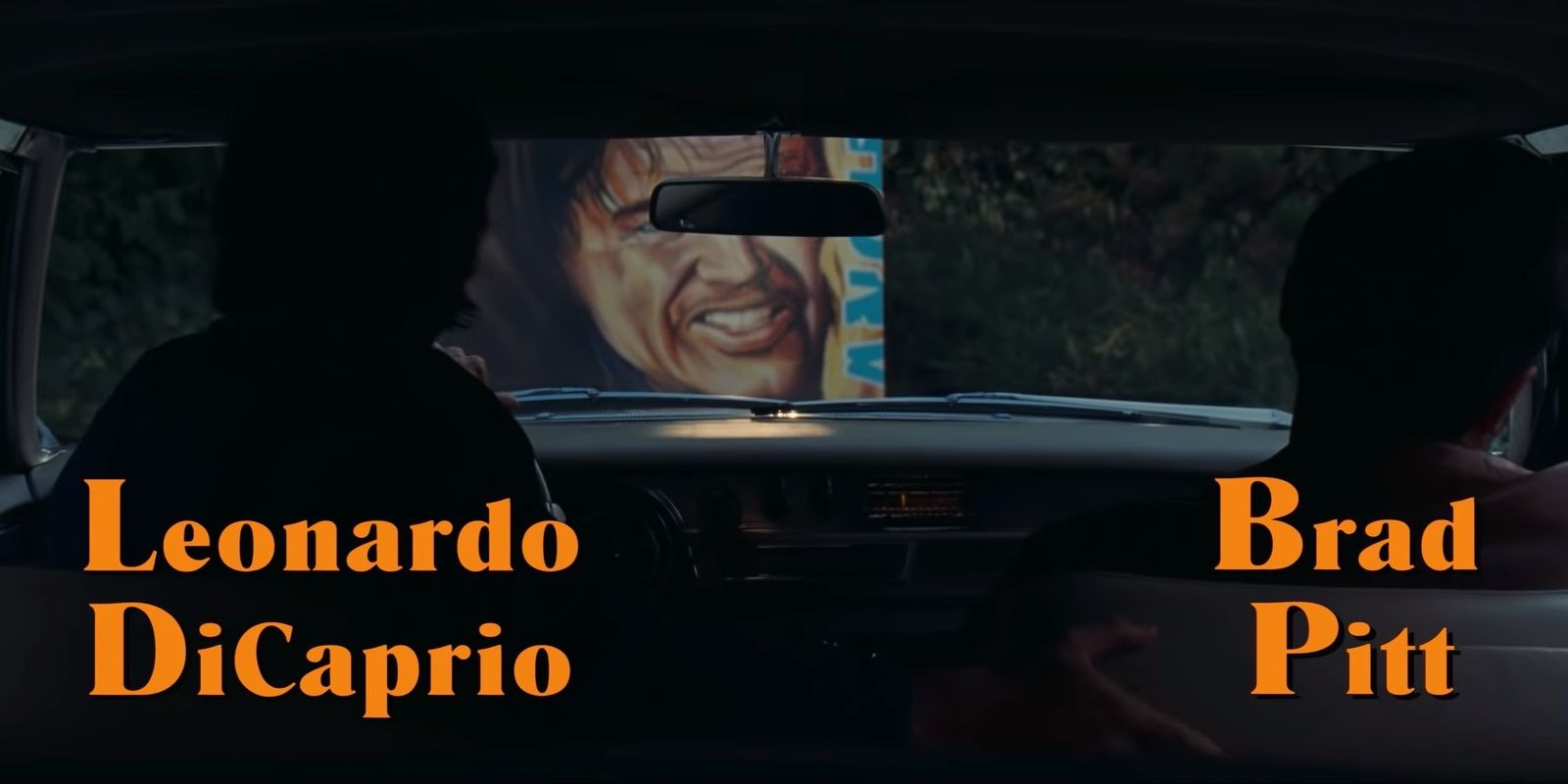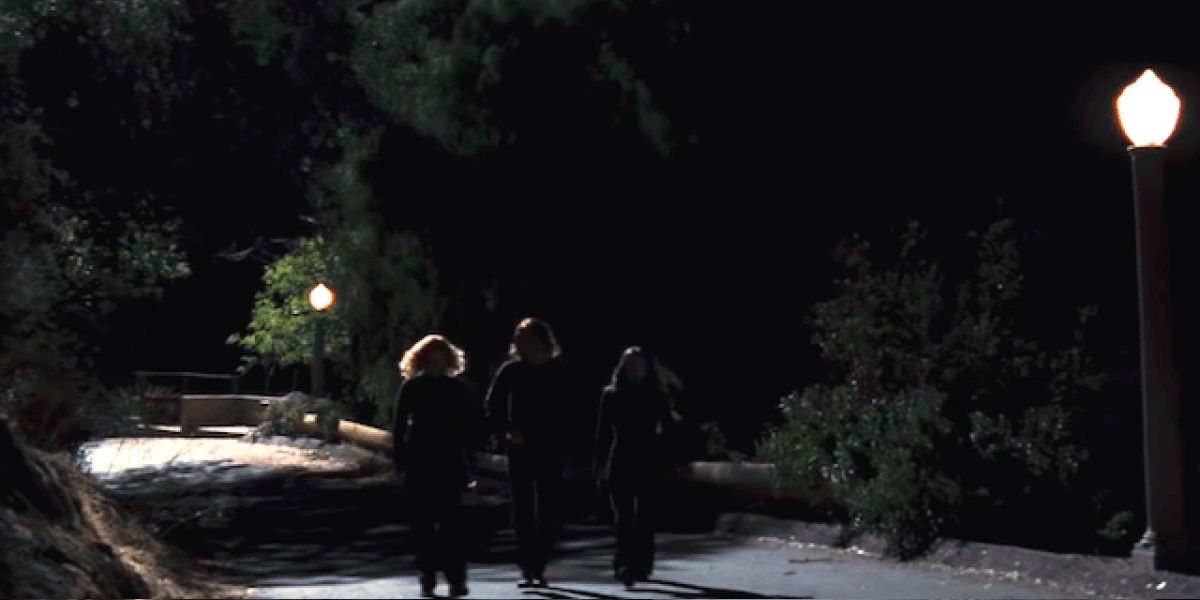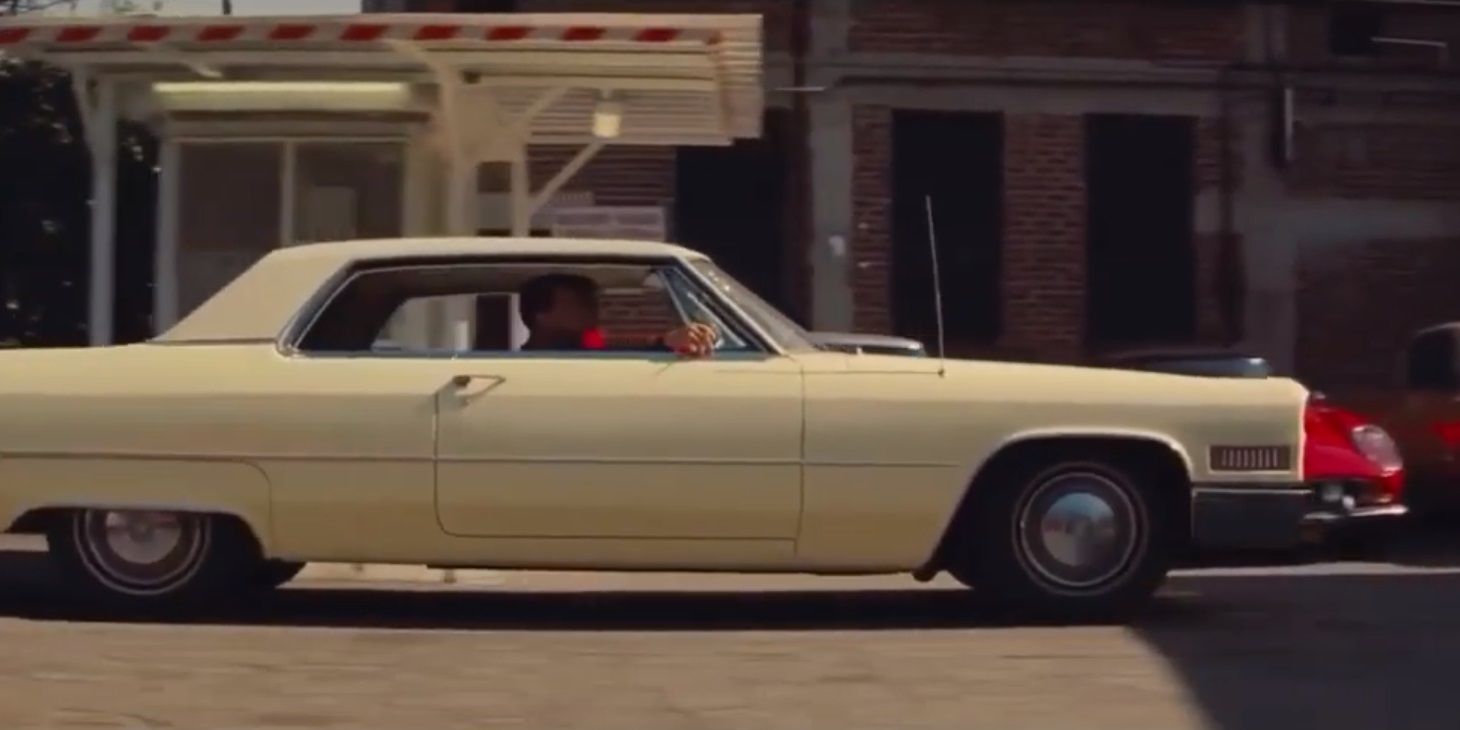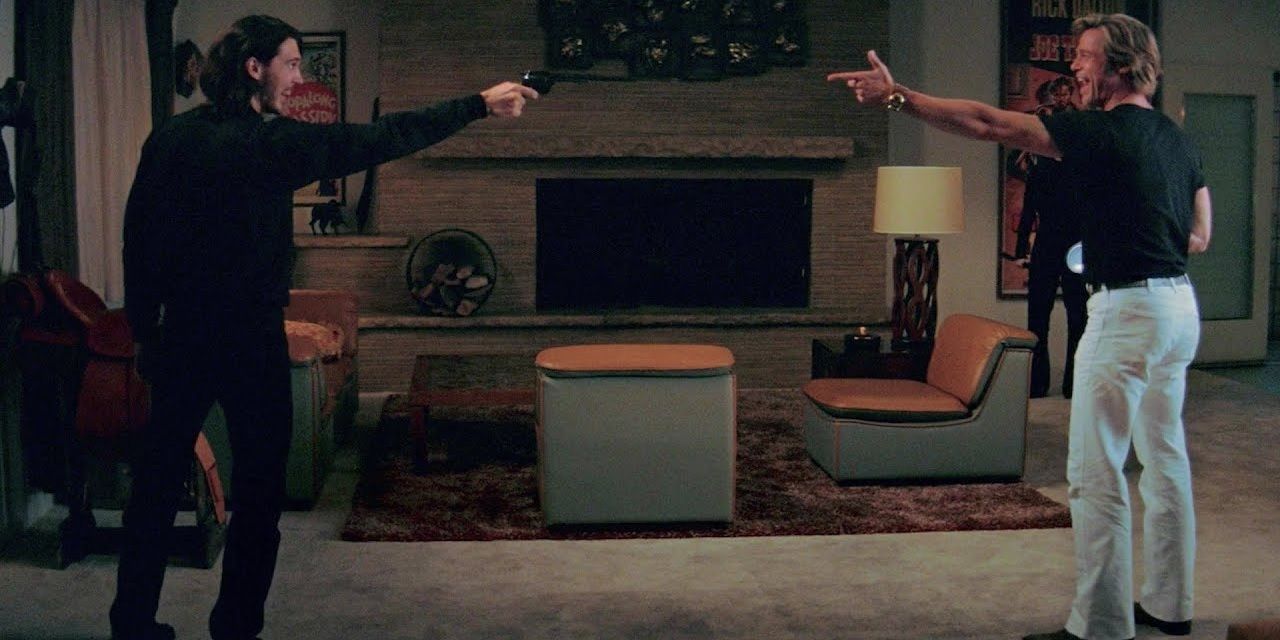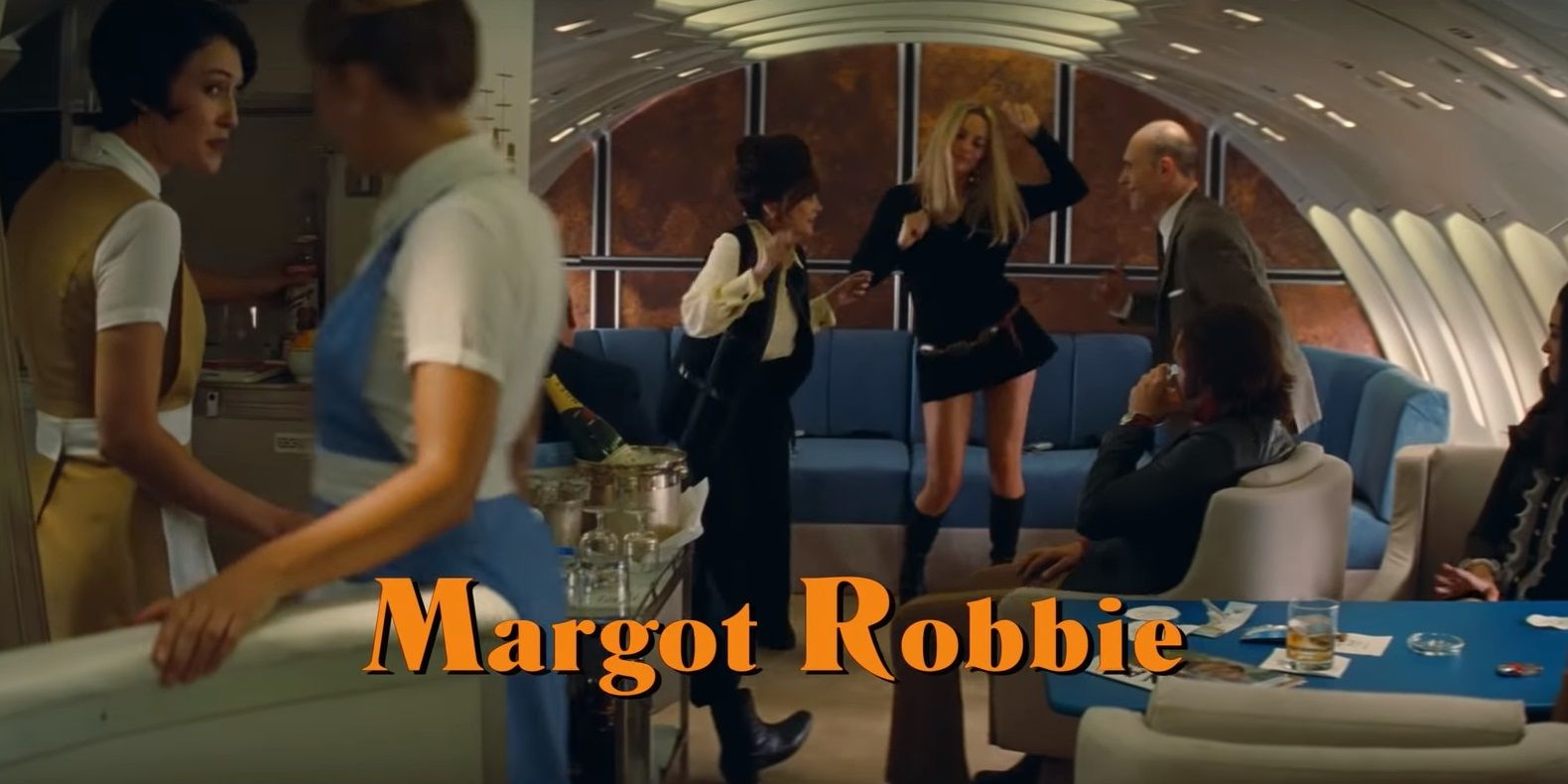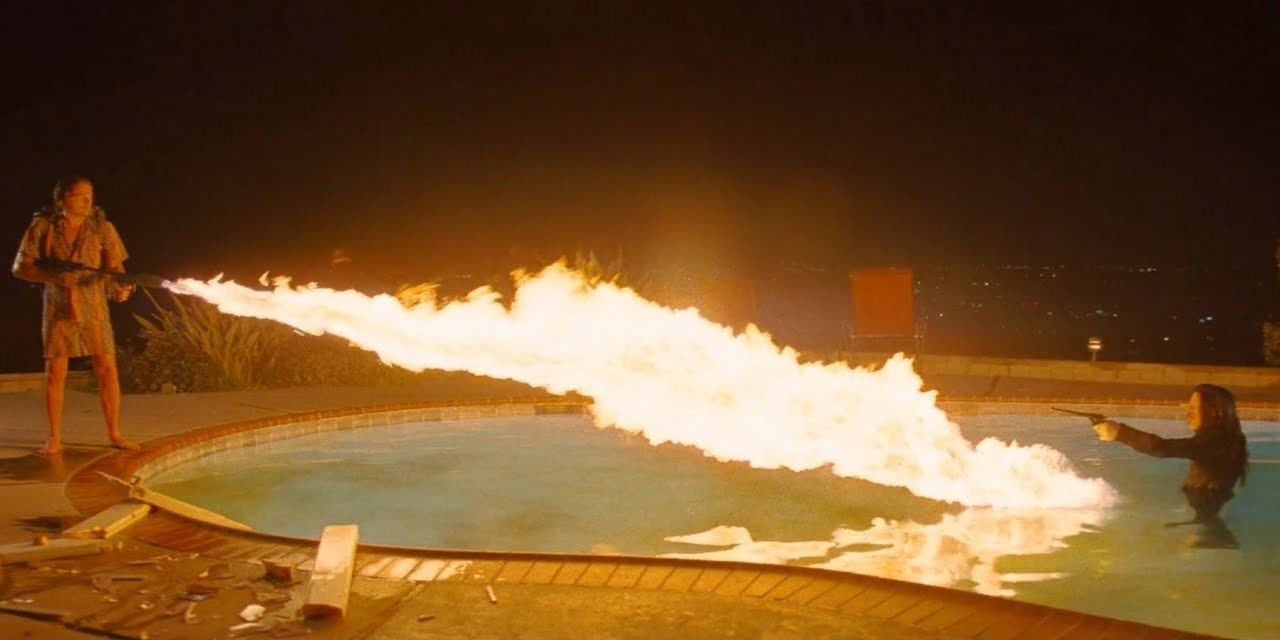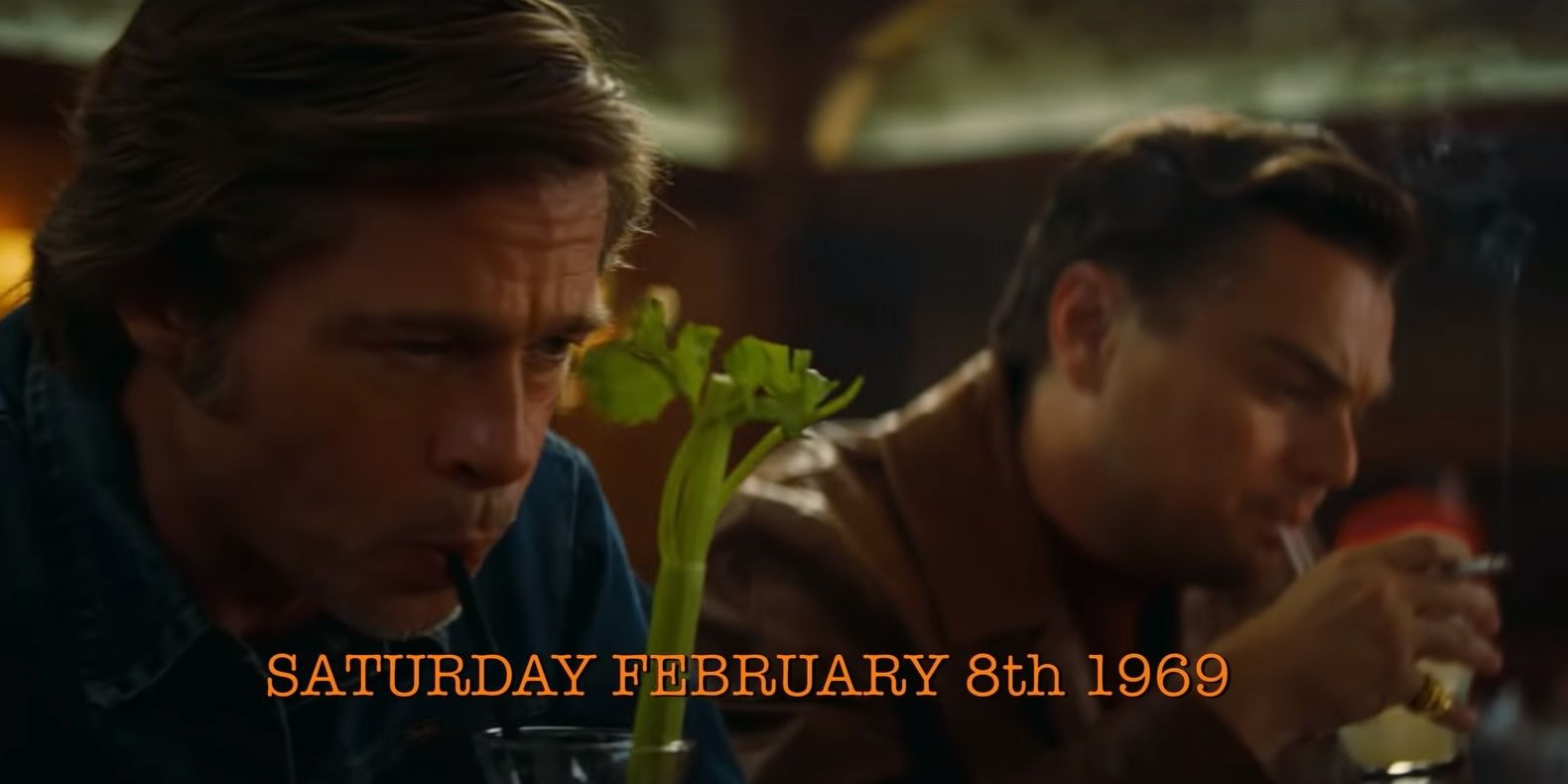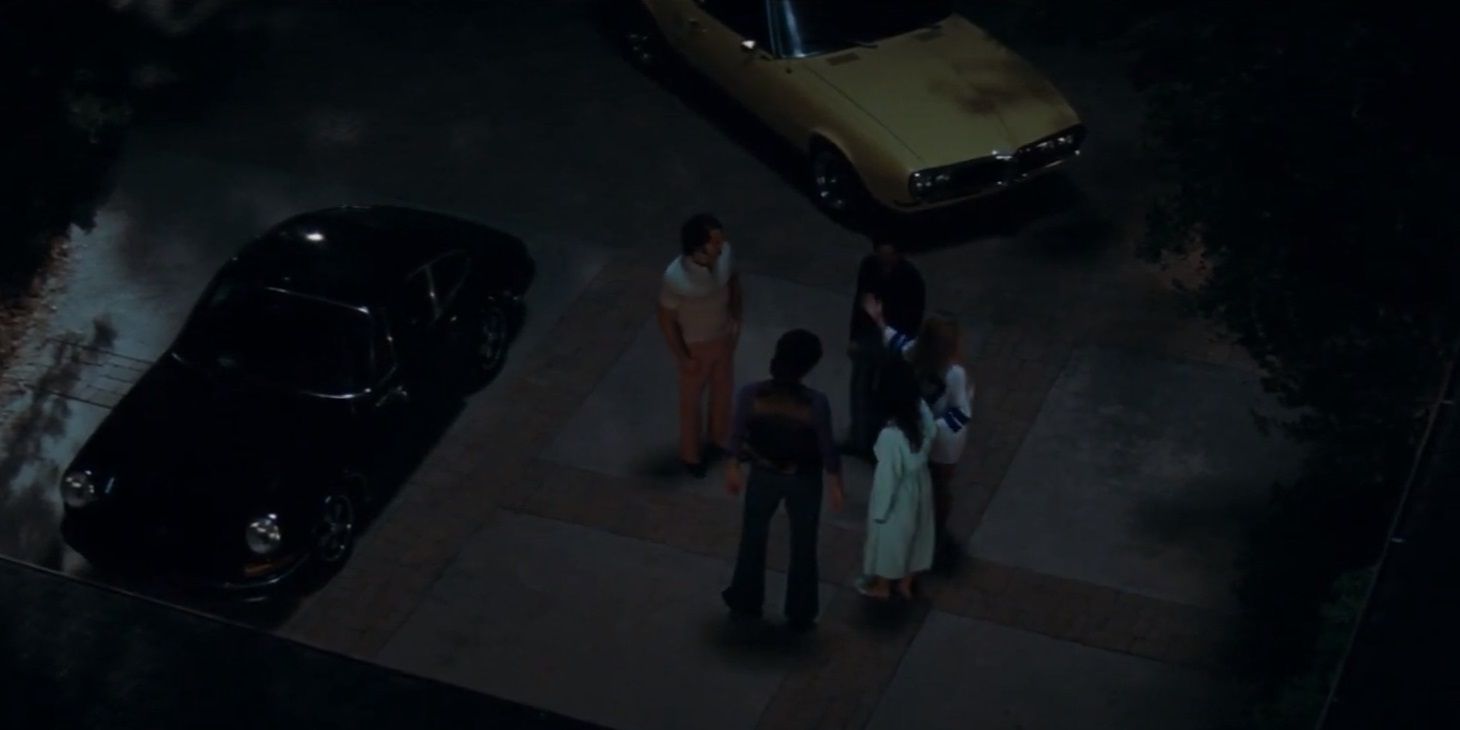Quentin Tarantino’s Once Upon a Time in Hollywood was one of 2019’s most critically acclaimed movies. That was reflected at this year’s Oscars, where the film went home with the awards for Best Supporting Actor and Best Production Design out of a total of 10 nominations.
Part of what made the movie so great is that Tarantino opened and ended it with the perfect scenes to introduce us to the unique world of the story and wish us farewell, respectively. So, here are five great things about Once Upon A Time In Hollywood’s opening and five about its ending).
Opening: It Immerses Us In The 1960s
Once Upon a Time in Hollywood takes place in the late 1960s (1969, to be exact), and the wardrobe, color palette, and Oscar-winning production design immerse us in a gloriously nostalgic vision of that era. Everything from Sharon Tate’s dance to the suitcases in the airport recalls this point in history.
The opening Bounty Law promotion perfectly recreates westerns — and broadcast television in general — from the late ‘60s. The movie definitely views ‘60s culture and society through rose-tinted glasses, but when rose-tinted glasses make it look this beautiful, who cares?
Ending: It Makes The Long Build-Up Worth It
One of the most criticisms levied at Once Upon a Time in Hollywood is that it’s too slow-paced. But when the climax arrives, this slow pacing turns out to have been building towards a gruesome finale. Tarantino claims he came up with the ending first, and worked his way backwards, so this effect makes a lot of sense.
The climactic sequence makes the first two acts’ long build-up worth it, as Cliff shows us just how deadly he is while tripping on acid and Rick "burns a hippie’s ass to a crisp."
Opening: The Slow Pull-Back Reveal
Robert Richardson’s cinematography is one of Once Upon a Time in Hollywood’s greatest assets. This shot is all about controlling the information that the audience is given. Following the 4:3 prologue introducing Rick Dalton and his career, we open so close on a painting of some teeth that it’s not really clear what we’re looking at.
The camera slowly pulls back, revealing that we’re in the back of a car. Cliff and Rick get in and Cliff reverses out of Rick’s driveway, revealing that we’ve been staring at a poster for a Rick Dalton movie that Rick has pinned up in his own driveway.
Ending: All The Parallel Storylines Converge
Just as The Hateful Eight’s single-location setting was compared to Reservoir Dogs, Once Upon a Time in Hollywood’s interwoven tapestry of storylines was compared to Pulp Fiction. But unlike Pulp Fiction, this one has a more or less linear narrative structure, allowing those storylines to converge at the end.
Everything from throughout the movie — Cliff’s trip to Spahn Ranch, Rick’s flamethrower from The 14 Fists of McCluskey, Brandy’s loyalty to Cliff, Cliff’s acid-dipped cigarette, the fact that Rick is Sharon Tate’s neighbor etc. — suddenly comes together in the climactic set piece.
Opening: It Subtly Sets Up The Character Dynamics
Without using any expository dialogue, Quentin Tarantino sets up the character dynamics of Once Upon a Time in Hollywood as the opening titles play over a montage of shots. We see that Sharon Tate can afford to fly privately, and she’s harassed by paparazzi as soon as she lands, so she represents Hollywood’s biggest stars.
Rick Dalton is left alone by paparazzi, right after a prologue established him as a TV star, setting him up as a has-been. And his stunt double Cliff Booth is driving him around. Cliff represents the more realistic side of the film industry: he lives in a trailer that isn’t even in Hollywood, and he can’t get work anywhere.
Ending: It’s One Of Tarantino’s Most Violent Sequences
Tarantino’s fans love stylized violence, and most of his movies have it in spades. But Once Upon a Time in Hollywood was a different kind of Tarantino picture. It told the story of a day in the life of people working at different levels of the film industry, with a couple of punches here and there.
The director saved his signature violence for the end, making his fans wait for it, and when it hit, it really hit. Cliff and Brandy ravaging the Manson Family killers is one of the most triumphantly violent sequences in Tarantino’s filmography.
Opening: The Perfect Soundtrack
Quentin Tarantino famously picks great soundtracks. He’s reluctant to let composers write original music for his films, because he doesn’t want to entrust someone else with the soul of his movie (although he made an exception for Ennio Morricone, his favorite composer of all time, who wrote the award-winning foreboding score for The Hateful Eight).
Once Upon a Time in Hollywood’s opening remains in silence until Cliff and Rick get in the car and turn on the radio. The song that plays on the radio, and carries through the opening scene, is perfectly matched to the ‘60s era: “Treat Her Right” by Roy Head and the Traits.
Ending: Tarantino Bombastically Addresses His Critics
In the Tarantino universe, the Manson Family murderers decided against killing Sharon Tate and her guests and instead went to the house next door to murder Rick Dalton for teaching them to kill with his violent TV series Bounty Law.
This can be seen as a response to all the critics of Tarantino’s own use of violence in his movies. There’s a thematic resonance in Rick using a weapon from one of his old action movies to kill the final assailant.
Opening: Saturday February 8th 1969
After we’re introduced to Sharon Tate dancing on a private plane, the opening montage returns to Rick and Cliff in the restaurant, where the date is revealed in an on-screen caption: “Saturday February 8th 1969.” Anyone with a detailed knowledge of this era knows that Tate was murdered on August 8, 1969, and anyone with a vague knowledge knows that it was late summer.
So, we go into the movie knowing roughly how far away (or exactly how far away) the climax will be. And since this is a Tarantino movie, and Tarantino is famous for tweaking history to get cinematic justice, we still have no idea what’s going to happen when that night comes.
Ending: It’s Delightfully Ambiguous
Quentin Tarantino always ends his movies somewhat ambiguously, but there’s always a definitive sense of closure. From Reservoir Dogs to The Hateful Eight, most of Tarantino’s movies stop at the point where the audience can figure out the rest for themselves.
As Sharon Tate avoids her grisly real-life fate and invites Rick Dalton up to her house for a drink, we can assume that in Tarantino’s revised version of history, Old Hollywood remained intact, Tate enjoyed the long acting career she always deserved, and TV cowboys like Rick made a comeback.

